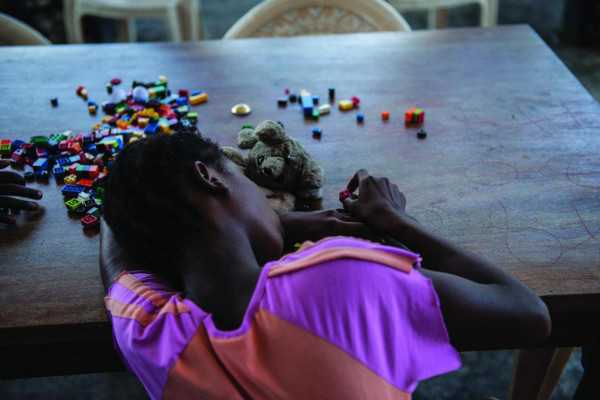Human Wrongs Watch
Violence against children is universal – so prevalent and deeply ingrained in societies it is often unseen and accepted as the norm – according to new, unprecedented data presented by the United Nations on 4 September 2014.
The report found that about two thirds of children worldwide between ages 2 and 14 (almost 1 billion) are subjected to physical punishment by their caregivers on a regular basis. And yet, only about one third of adults worldwide believe that physical punishment of some kind is necessary to properly raise or educate a child.
Violence against Children, a Common Aspect of Human Society Now
Susan Bissell, the Chief of Child Protection at UNICEF said in interview that the data essentials show that “if there is one common aspect of human society right now, it is the fact that tremendous violence is committed against children.”
“It is important that we don’t simply go away with the message that violence is everywhere, we live in a horrific world; but in fact to say, there are tried, true, measured, evaluated solutions,” she said.
While the data focuses on physical, emotional and sexual violence in settings children should feel safe; their communities, schools and homes, there is a fundamental limitation to document violence against children.
The data includes new figures on violent discipline – the most common form of violence against children as well as violence against girls – widespread rates of physical and sexual abuse. It also takes a look at homicide rates – a leading cause of death among adolescent boys.
Children, One Fifth of Homicide Victims
In fact, one fifth of homicide victims globally are children and adolescents under the age of 20, resulting in about 95,000 deaths in 2012, and slightly more than 1 in 3 students between the ages of 13 and 15 worldwide are regularly bullied in school.
“Violence begets violence. We know a child experiencing abuse is more likely to see violence as normal, even acceptable and more likely to perpetuate violence against his or her own children in the future,” UNICEF Executive Director Anthony Lake said.
Perceptions on violence including shocking figures on children’s views and reluctance to report abuse was also reported. Hence, changing attitudes with respect to violence against children starts with knowledge. The report is an opportunity to go into the public domain, and say “now you have to do something,” noted Bissell.
Lifetime Effects
“Social change, attitudes towards boys and girls and then gender attitudes take a long time to change, but we can see more rapid change than ever before, not least with the advent of social media and the use of more innovative and creative approaches,” Bissell said.
The effects of violence against children can last a lifetime, as exposure to violence can alter a child’s brain development damaging their physical, mental and emotional health. Violence is also passed down from one generation to the next. But violence is not inevitable; it can be prevented.
“Violence against children occurs every day, everywhere [but] it is not inevitable. It is preventable — if we refuse to let violence remain in the shadows,” Lake said. “The evidence in this report compels us to act — for the sake of those individual children and the future strength of societies around the world.”
UNICEF points to six strategies to enable society as a whole, from families to Governments, to prevent and reduce violence against children. They include supporting parents and equipping children with life skills; changing attitudes; strengthening judicial, criminal and social systems and services; and generating evidence and awareness about violence and its human and socio-economic costs, in order to change attitudes and norms.
*Source: UN Release.
Read also:
More Than 700 Million Women Alive Today Were Married As Children
By 2020, More Than 140 Million Girls Will Have Become Child Brides – UN
Child Marriages: 39,000… Every Day
India: Saying No to Child Marriage
Pakistan: Girls Tormented by Stigma After Rape
Stop at Least Six Grave Abuses against Children in Conflict
Slavery: Use of Children as Domestic Workers Pervasive Throughout Haiti
Millions of Urban Children at High Risk of Violence, Exploitation and Trafficking
Gaza: 500,000 Children Unable to Return to School
Africa Will Be Home To 4 in 10 Children on Planet Earth By 2050
CAR — Recruitment, Abuse of Children by Armed Groups, Endemic
Grandmothers Raped in Front of Their Grandchildren; Children in Front of Their Parents
One Million People, in Particular Children, Displaced in “Liberated” Iraq
Crisis in Former French Colony Disrupts Schooling of 700,000 Children
Children in Conflicts: Abducted, Recruited, Killed, Maimed, Raped
Caught in Conflicts and Disasters, Millions of Children Need Second Chance at Life
2014 Human Wrongs Watch










